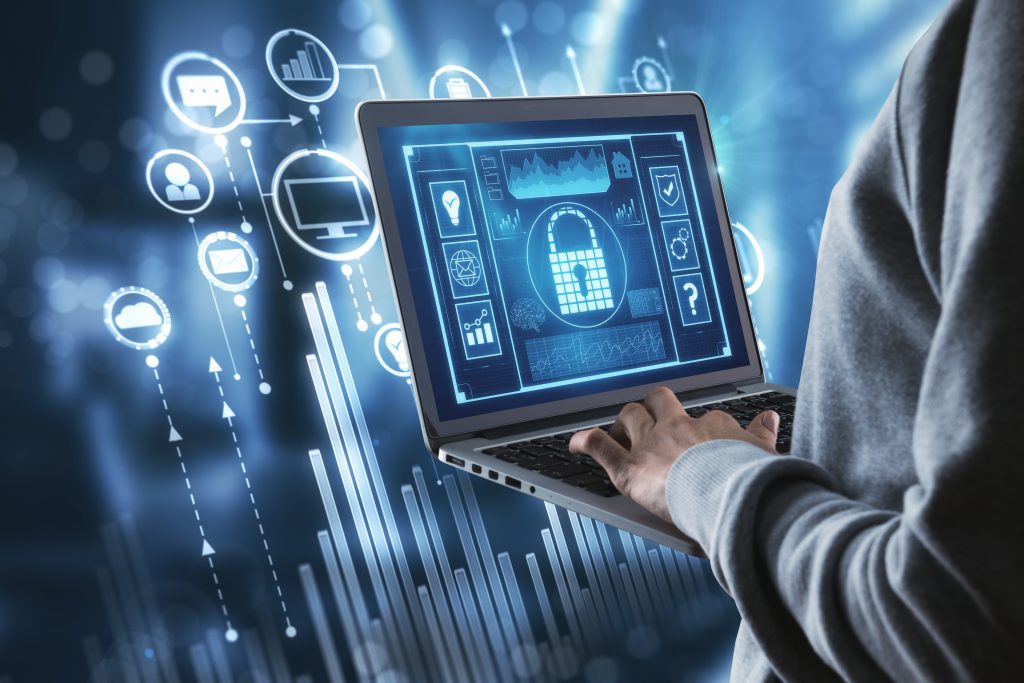It’s no secret that threat actors are using more and more complex methods to steal information or even hold it for ransom—and typically cybersecurity measures are a half step behind, so it’s important to make sure you’re consistently utilizing protection methods that you may consider basic, such as multi-factor authentication.
When you saw the title, you might have rolled your eyes a little, assuming multi-factor authentication is old news. But it couldn’t be further from the truth. Every compromise I have seen in 2020 and also thus far in 2021 could have easily been prevented by multi-factor authentication. We see complex cyberattacks happening more frequently each month, effectively building a solid foundation for your company’s strategy on an individual level gives your IT team the power to build a more complex security strategy.
What’s the Point of Multi-Factor Authentication?
Think of multi-factor authentication like a deadbolt on your front door. The smaller lock on the knob might do the trick, but wouldn’t you feel much safer in your home if you had an additional obstacle for strangers to overcome if they want to get into your house?
According to a Google survey, multi-factor authentication consistently ranks in the top three things security advisors recommend to protect online security. Multi-factor authentication gives you an additional lock on the doors to your organization’s network. Your information will stay safer because thieves would have to steal both your password and your other token or mobile device, or know the answers to specific security questions (Who was your favorite high school teacher?) in order to even get a chance at busting into your network masquerading as you.
Without further ado, let’s take a peek at 5 reasons this layer should be essential for any business looking to ensure their network’s security.
1. Multi-Factor Authentication is a Low-Cost Security Option
When you’re looking to implement a multi-factor authentication system for logging onto your organization’s network, you’re working with a lot of hardware you already have or your employees already use on a daily basis. Most employees will have the option to receive a push notification from a mobile device or will be able to answer a variety of security questions to gain access to the system. Some systems for multi-factor authentication may simply require a PIN to gain access, which seems simple but is highly effective.
2. You Can Secure More Endpoints
As we work to keep up with a more dispersed workforce, endpoint security remains a top concern for many IT security professionals. When you have all of your devices in one office building, it is relatively easy to have adequate network security. Now that we enter our second year of many employees working from home, it’s clear that some elements of a dispersed workforce will remain for a while, including the risks associated with an uncontrolled physical environment around the remote devices.
Multi-factor authentication can drastically reduce your risk of a data breach if a remote device is compromised or stolen by a malicious actor. Adding the extra lock to the doors of your network protects your network from anything from a burglar to a curious housemate.
3. You Enhance Security without Affecting the User Experience
Occasionally IT teams and developers become concerned about layering on additional security features because that additional security could come at the expense of the end user experience. When it’s an employee’s user experience, it’s not the end of the world. If it’s the customer’s user experience in an application, it’s something to take very seriously, especially as the customer experience on your platforms could make a difference in customer loyalty.
Adding a token, PIN or security question to authenticate a user is an unobtrusive security option that will not affect the streamlined nature of an application experience once logged in. This keeps your customers protected and happy with the services they can access through your portals, platforms or mobile apps.
4. You Increase Employee Productivity
As amazing as your employees might be, they’re only human—just like you. And all humans have the power to forget complex passwords or alternatively (and much more dangerously) use common passwords, like 123456 or QWERTY. A company might have password policies that require employees to pick strong passwords and reset them at set intervals, but forgetting passwords is becoming a bigger and bigger problem the more complex those policies get. Cue regular time lost to resetting passwords or going through a lengthy process because an employee could not remember their login information.
Multi-factor authentication allows users to sign in with multiple methods, giving them faster, more efficient login processes while still verifying their identity. This could be a single use code generated by an app, a PIN or even a biometric scan. For the sake of efficiency and employee user experience, multi-factor authentication is the way to go.
5. Multi-Factor Authentication Keeps You Compliant
Many governing bodies and also some states require at least dual-factor authentication so implementing these practices keeps you compliant with the requirements to have strong authentication processes, especially if your organization processes and stores sensitive data, such as financial information or identifying client information. Sometimes these requirements also extend to employee information so make sure that you are protecting both when setting up your multi-factor authentication system.
Even though many organizations view compliance as table stakes, it can’t hurt to take proactive steps to remain in compliance and given that multi-factor authentication is a relatively low cost, high impact investment to make in your security strategy, it’s an investment that could save your organization significant money and stress in noncompliance fines down the road
LightEdge Managed Security Services Take You Beyond the Basics
Now that you’ve got the basics covered with multi-factor authentication, it’s time to look for ways to level up your security practices. This can be a massive undertaking for your organization’s already overextended IT team. LightEdge is here to help you find ways to bolster your network security without the headache that goes with managing it all on your own. We’re here to work alongside your team to keep your mission-critical infrastructure and data safe from whatever threats may be knocking on your door.
Are you ready to move beyond the basics and take control of the future of your organization’s network security? Let’s get some time on the calendar so our experts can answer all your burning security questions and get you some tangible steps to take to reinforce your security strategy.




